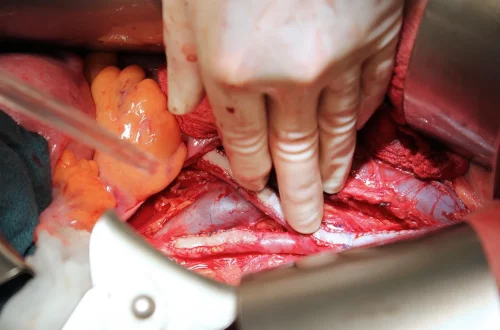-
Chronic Rhinosinusitis in Cats: Steroid or Benadryl Treatment Options
Chronic rhinosinusitis is a complex condition that affects many cats, causing persistent inflammation of the nasal passages and sinuses. This condition can lead to discomfort, nasal discharge, and breathing difficulties, significantly impacting a cat’s quality of life. The underlying causes of chronic rhinosinusitis can vary, including allergies, infections, or even structural abnormalities within the nasal cavity. As pet owners, it’s essential to recognize the signs of this condition and seek appropriate care. Managing chronic rhinosinusitis requires a comprehensive understanding of the available treatment options, including the use of steroids and antihistamines like Benadryl. Both treatments have their merits and potential drawbacks, making it crucial to weigh the options carefully. In…
-
Understanding Oronasal Fistula in Dogs: Causes and Treatments
Understanding oronasal fistula in dogs is crucial for pet owners and veterinary professionals alike. This condition, characterized by an abnormal connection between the oral cavity and the nasal passages, can significantly impact a dog’s health and quality of life. It often arises from various underlying causes, including dental disease, trauma, or congenital defects. The presence of an oronasal fistula can lead to a range of complications, such as chronic nasal infections, difficulty eating, and severe discomfort. Recognizing the symptoms early is vital for effective treatment. Dogs with this condition may exhibit signs such as nasal discharge, bad breath, coughing, or difficulty swallowing. The complexity of diagnosing oronasal fistulas requires a…
-
Understanding Red Cell Function and Health in Dogs
Understanding the intricate world of canine health involves a deep dive into various physiological components, one of which is the function of red blood cells. These remarkable cells play a vital role in ensuring the overall health and vitality of dogs. Red blood cells are responsible for transporting oxygen from the lungs to the rest of the body, a function that is critical for the maintenance of energy levels and overall well-being. In dogs, the efficiency of red blood cells can greatly impact their physical performance, immune response, and ability to recover from illness or injury. Understanding how these cells operate, what factors influence their health, and recognizing potential problems…
-
Understanding Red Cell Functionality in Dogs and Its Importance
Understanding Red Cell Functionality in Dogs and Its Importance The health and well-being of our canine companions often hinge on understanding the intricate biological processes that keep their bodies functioning optimally. One of the most vital components of this biological machinery is the red blood cell, or erythrocyte. These cells play a crucial role in transporting oxygen throughout the body and are essential for overall energy production and metabolic function. In dogs, just as in humans, the proper functioning of red blood cells is critical to maintaining health and vitality. Red blood cells are produced in the bone marrow and have a lifespan of approximately 110 to 120 days. Their…
-
Understanding Canine Retinal Attachment Surgery: A Guide for Pet Owners
Understanding the complexities of canine health can be daunting for many pet owners, especially when it comes to specialized medical procedures. Among the various conditions that can affect a dog’s vision, retinal detachment stands out as a particularly serious issue. This condition can arise due to a variety of underlying factors, including trauma, inherited diseases, or systemic health issues. When a dog suffers from retinal detachment, prompt veterinary intervention is critical. Retinal attachment surgery is one of the potential solutions to restore or preserve a dog’s vision. For many pet owners, understanding this surgical procedure can alleviate concerns and help them make informed decisions regarding their furry companions’ health. It…
-
The Benefits of Bute Paste for Horses: A Comprehensive Guide
Bute paste, a common medication used in the equine world, has gained significant attention among horse owners and trainers for its effectiveness in managing pain and inflammation. Derived from phenylbutazone, this non-steroidal anti-inflammatory drug (NSAID) is particularly valued for its ability to alleviate discomfort associated with various equine ailments. As horses are inherently athletic and often engage in rigorous physical activities, they are susceptible to injuries and conditions that can lead to pain and inflammation. Understanding the role of bute paste in equine health is essential for horse owners who want to ensure the well-being and performance of their animals. The paste formulation allows for easy administration, making it a…
-
Understanding Cat X Rays: A Guide for Pet Owners
Understanding the inner workings of a cat’s body can often feel daunting, especially for pet owners unsure about the various diagnostic tools available. Among these tools, X-rays play a crucial role in veterinary medicine. Just as with humans, X-rays offer invaluable insights into the health of our feline companions, providing a non-invasive method to visualize internal structures. For many pet owners, the thought of their beloved cat undergoing an X-ray can be anxiety-inducing, raising questions about the procedure itself, its necessity, and the implications of the findings. Cats are naturally adept at hiding discomfort and illness, which can make diagnosis a challenge. This is where diagnostic imaging, such as X-rays,…
-
Understanding Dog CCL Surgery: What Pet Owners Need to Know
Understanding Dog CCL Surgery: What Pet Owners Need to Know When it comes to our beloved pets, ensuring their health and well-being is a top priority for every responsible owner. Among the various health concerns that can affect dogs, injuries to the cranial cruciate ligament (CCL) are particularly common, especially in active or larger breeds. The CCL plays a crucial role in stabilizing the knee joint, and when it becomes torn or damaged, it can lead to significant pain and mobility issues for the affected dog. Recognizing the symptoms of a CCL injury is vital for prompt treatment, as delays can exacerbate the condition and lead to further complications. In…
-
Understanding the Lifespan of Horses: How Long Do They Live?
Horses have been companions to humans for thousands of years, serving various roles from transportation to agriculture and even as beloved pets. Their majestic presence and unique characteristics make them fascinating creatures. Understanding the lifespan of horses is essential for anyone involved in their care, whether as an owner, a trainer, or a veterinarian. The average lifespan of a horse can vary significantly depending on various factors, including breed, care, and living conditions. This knowledge not only helps in planning for the future but also ensures that these magnificent animals receive the proper care throughout their lives. Horses, like many other domesticated animals, can experience a wide range of health…
-
Understanding Your Dog’s Anatomy: The Importance of Canine Health
Understanding your dog’s anatomy is crucial for any pet owner who wants to ensure the well-being and longevity of their furry companion. Dogs, much like humans, have intricate bodily systems that work together to maintain health and vitality. By gaining insight into the anatomy and physiology of dogs, owners can better understand their needs, recognize signs of discomfort, and respond appropriately to various health issues. The bond between humans and dogs is profound, often characterized by mutual trust and affection. However, this relationship also comes with the responsibility of understanding what makes our canine friends tick. From the skeletal structure that supports mobility to the complex organ systems that manage…





































